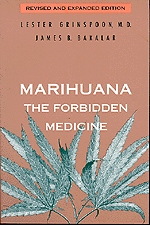By DAVID M. EWALT and ANNA VANDER BROEK

Austin, Texas, is famous for its parties. People flock from around the world to attend events like the annual South by Southwest film and music festival. And when they get there, chances are they make like the locals and throw back a few cold ones--because Austin may be the hardest-drinking city in America.
Austin ranks high for its drinking habits across the board. According to the Centers for Disease Control and Prevention's (CDC's) 2007 Behavioral Risk Factor Surveillance System Survey, 61.5% of adult residents say they have had at least one drink of alcohol within the past 30 days, and a staggering 20.6% of respondents confess to binge drinking, or having five or more drinks on one occasion.
Some residents attribute those numbers to the city's sizable population of college students. Austin is home to several schools, including the University of Texas at Austin, one of the largest universities in the country.
"I imagine that's probably why the city's on [the list]," says Hunter Darby, manager of Austin's Dog & Duck Pub. "Sixth Street in Austin is like a tiny version of Bourbon Street. It caters a lot to a younger crowd who are right at age 21. They'll just go from bar to bar to bar. ... There are a ton of bars per human being in this town."
Collegiate excess has repercussions far beyond hangovers and missed classes, and should be of concern to members of the surrounding community. "Binge drinking hurts not only the drinker but also others near him," says Henry Wechsler, Ph.D., a lecturer at the Harvard school of Public Health, where he was also the director of the College Alcohol Study, and author of Dying to Drink: Confronting Binge Drinking on College Campuses.
"The binge drinker disturbs the peace, through noise, vandalism and sometimes violence. Like secondhand smoke, binge drinking pollutes the environment."
"The [social] cost of alcohol is in the billions of dollars. Roughly half the total is related to what's called alcohol addiction," says Paul Gruenewald, scientific director of the Prevention Research Center at the University of California, Berkeley, which is funded by the National Institute on Alcohol Abuse and Alcoholism.
"The other half is related to other harms that happen to people when drinking; primarily drunk driving, drunk driving crashes, pedestrian injuries, violent assaults, and various criminal behaviors and various injuries," Gruenewald said."It's not a pretty picture. It's quite ugly from the public health point of view. It's a much bigger problem than crime related to illegal drugs," he added.
Coming in second on the list is Milwaukee. This city, known as "the nation's watering hole," has a long reputation as a city built on beer. It was once the nation's top beer-producing city, home to four of the world's largest breweries: Schlitz, Pabst, Miller and Blatz. Legendary sitcom characters Laverne and Shirley fixed bottle caps on one of the city's assembly lines. Even the town's baseball team--the Brewers--reflects its boozy past.
Rounding out the top five hardest-drinking cities are San Francisco; Providence, R.I.; and Chicago.
To determine the cities with the highest alcohol consumption, we started by making a list of the 40 largest metropolitan statistical areas in the U.S.--geographic entities defined by the U.S. Office of Management and Budget for use by federal agencies in collecting, tabulating and publishing statistics.
We then examined data from the CDC's 2007 Behavioral Risk Factor Surveillance System Survey (BRFSS), a nationwide system that collects information on health risk behaviors, preventive health practices and health care access.
In this survey, the CDC develops a core questionnaire and provides it to state governments, which then perform telephone surveys asking more than 350,000 American adults about their health.
Due to state-by-state variations in the handling of the survey, the BRFSS isn't a perfect way to measure drinking habits. But since its data come directly from citizens, it does provide a good idea of regional variations.
The survey doesn't report results for every city in the nation, so two of our 40 candidate cities were eliminated from the list due to missing data. And because the CDC coordinates the surveys but does not individually manage them, there tend to be differences in sample size and margin of error from city to city. So we removed another five cities from our list because they exhibited unusually large margins of error.
The remaining 33 cities were then ranked based on their residents' responses to three different questions on the BRFSS: whether they had at least one drink of alcohol within the past 30 days; whether men had more than two drinks per day or women one drink per day; and whether they had five or more drinks on one occasion. In each case, higher-ranking cities reported larger percentages of their population answering in the affirmative.
To determine the 15 hardest-drinking cities, we added up the rankings from each category, counting the "five or more drinks on one occasion" question twice, since it most directly addresses the question of problem drinking. We then sorted that sum into our final ranks.
Of course, just because a city ranks high on the list doesn't make it a den of debauchery. A top-drinking town could be populated by health-conscious adults who sip a glass of wine a day in order to keep their hearts healthy. And just downing a few cold ones doesn't make a person irresponsible.
Original here














